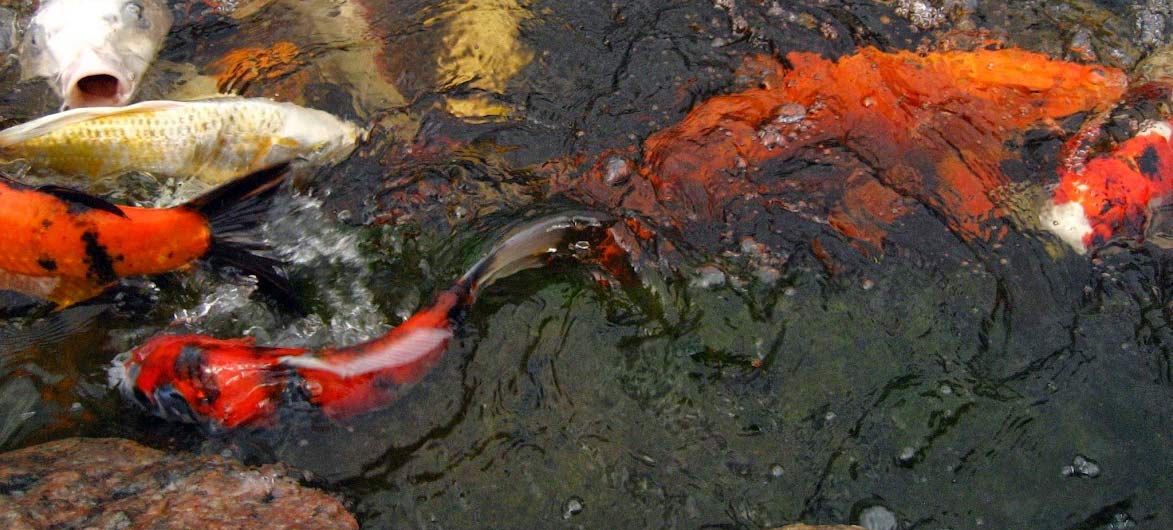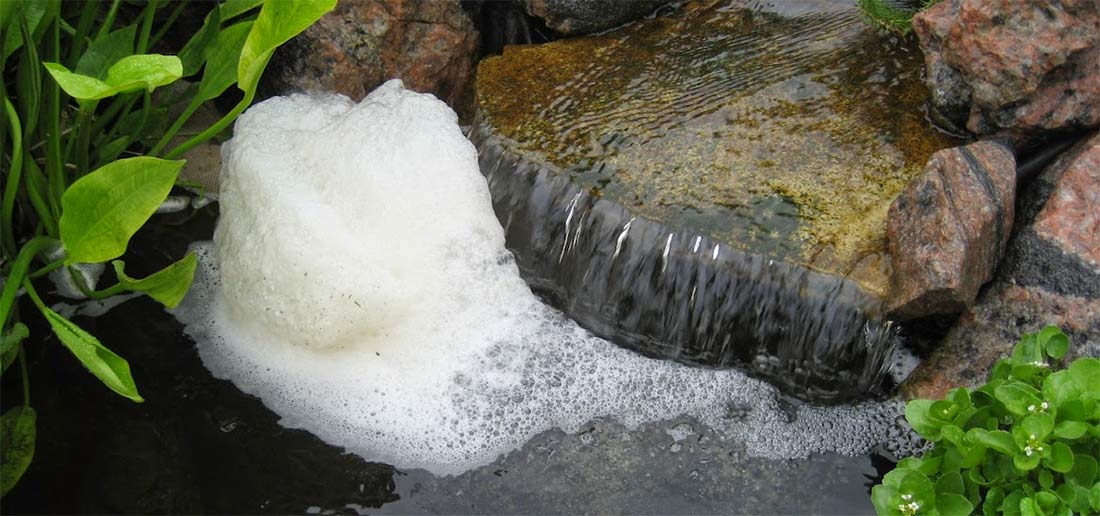It is an exiting time when your koi spawn in your pond. The fish create a flurry of activity when spawning, males chasing the females relentlessly around the pond, other fish feasting on the eggs. Plus, there’s always a chance that some of the babies will develop into beautiful big koi.

Koi spawning behaviour occurs once per year, and usually takes place over a period of a few days. When the conditions are right, water temperature, day length etc., the spawning begins (here in Ontario, usually between Late May to late June). Often before the actually day of spawning, you will notice one or more males showing more interest in a female(s), following her more closely around the pond. As the females get close to spawning time, they release pheromones that signal the males to ‘get ready’.
Spawning usually begins early in the morning, with the males aggressively chasing and nudging the female(s) around the shallows or edges of the pond. Like most fish, koi are egg layers, and a large mature female can produce up to 400,000 eggs! The male koi constantly chase the females, often pushing them into the roots of plants, the sides of the pond, or wherever they can. Each time this happens, it encourages the females to release the eggs the eggs. The eggs are sticky and will adhere to whatever they come in contact with. As the eggs are released, they are immediately fertilized by the males that are following her. This process is repeated over and over throughout the morning, often ending by noon. If you have several females in your pond the spawning may go on for a few days.
Koi (and goldfish) prefer to deposit their eggs in vegetation normally found in the shallow water around the shoreline of ponds. In koi ponds they, don’t usually have the same soft edges and vegetation as a natural pond. By providing plenty of plants like hornwort, water hyacinths or water lettuce or even artificial spawning mops or ropes, you can provide an ideal breeding habitat for them. Providing natural areas to spawn will also help protect the females from being chased into the hard stone edges of the pond.
During spawning, and usually for a few days after, you will probably some foam on the surface of the pond, especially around waterfalls or near aerators. This is normal, but if you have many large fish spawning, it could cause water quality issues.
When your fish spawn, always, monitor your water quality, especially ammonia levels, and be ready to perform some partial water changes if needed.

Foam buildup near the waterfall after spawning.
The video below shows koi that have been spawning in the shallow stream at the base of a waterfall. Most of the eggs deposited were deposited in the water cress. Notice the foam at the bottom of the waterfall, that is a sure sign that fish have been spawning in the pond.
DAY 1
The opaque spheres on the right are koi eggs one day after spawning. Eggs will stick to whatever they land on once released by the female. Koi eggs are very small, about 2 mm in diameter, so they are not always easy to see in the pond. In this picture, the eggs are attached to the roots of water hyacinths.
A day or 2 after the eggs have been deposited, you can see the development of the eye inside the egg. The water temperature affects how fast the eggs hatch. In cooler water, it takes longer for the eggs to develop and hatch.